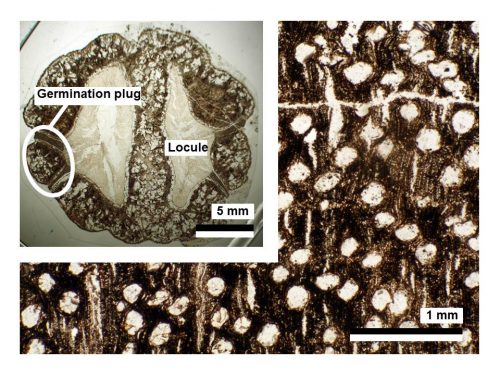 For today’s Fossil Friday, we have two plant fossils belonging to the genus Parinari in the family Chrysobalanaceae. Paleontologists always get excited when they find fossils from multiple parts of an organism, like finding the jawbone and vertebrae of a mammal, or in this case, the wood and fruit of the same tree.
For today’s Fossil Friday, we have two plant fossils belonging to the genus Parinari in the family Chrysobalanaceae. Paleontologists always get excited when they find fossils from multiple parts of an organism, like finding the jawbone and vertebrae of a mammal, or in this case, the wood and fruit of the same tree.
Obviously we don’t know if the fruit was attached to this exact tree, but these are the only two fossils that belong to the family Chrysobalanaceae, so it is likely that they are the same species!
The fruit is technically just the endocarp (think: pit). The outer, fleshy, edible parts of fruits don’t preserve so well in the fossil record. In this cross section we can see the two locules (chambers for holding seeds). In Parinari, only one of the locules is active and holding a seed, but in other types of fruit there may be one or many locules and seeds. In this specimen we can also see the germination plugs, which fall out of the endocarp when it is buried in the soil, allowing the seed to send a growing shoot out and up toward the sun, and a root down into the soil.
The wood sample is a cross section of the trunk or possibly a branch. The circles are the vessels, which transport water up the tree. One of the features that helped us identify this wood as Parinari is that almost all of the vessels are solitary: they are not directly connected to other vessels in clusters or rows (for an example of vessels in rows, check out our previous post on wood here and note the crescent shaped vessels in direct contact with neighboring vessels).
Both of these fossils come from the Lirio East site along the Panama canal and are 19 million years old.
0 responses to “Fossil Friday 8/28/15: A Fossil Fruit and its Tree”